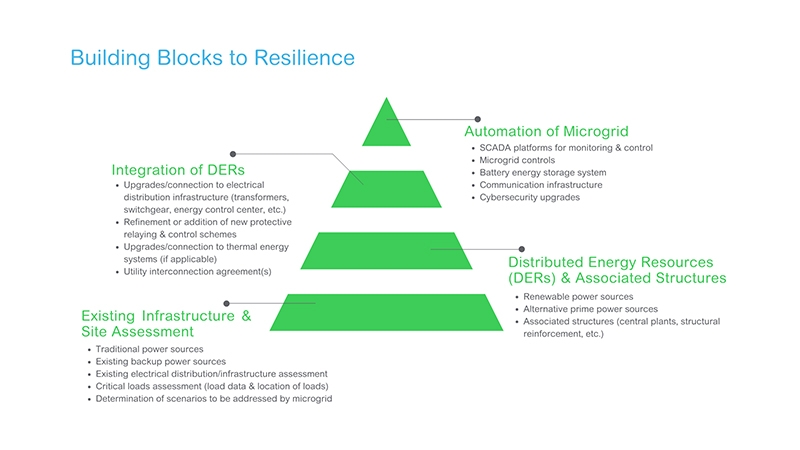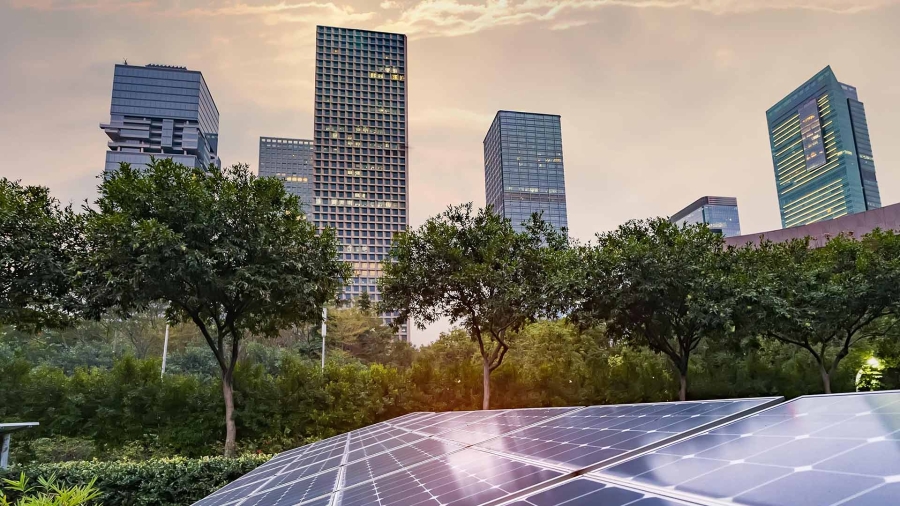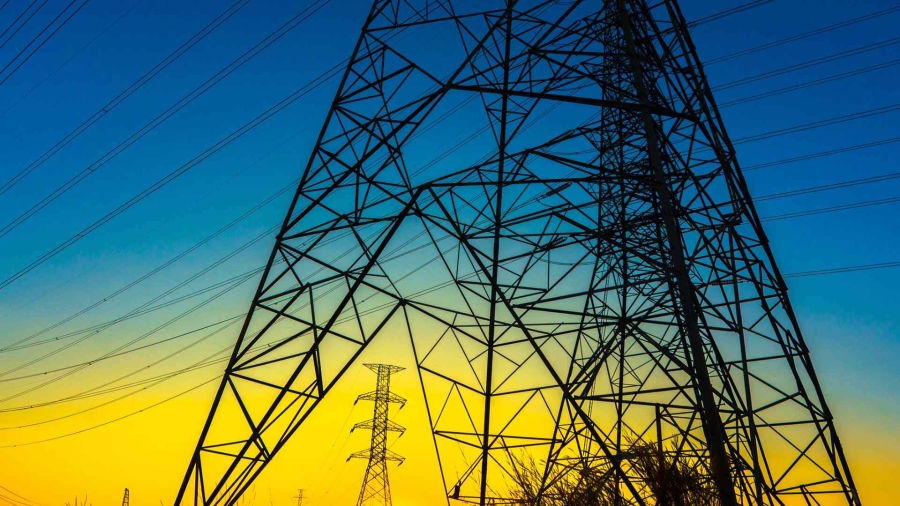Federal agencies are feeling the pressure from all sides to increase energy resilience, sustainability and operational continuity at their facilities and installations. With the Department of Defense being one of – if not the most – critical departments for public safety, access to reliable power is a must. Climate change risks are intensifying, resulting in more frequent extreme weather events and natural disasters that can impact federal facilities’ functionality. As a result of increasing climate risks, President Biden has taken a strong stance on climate action as a matter of national security. In its executive order to tackle the climate crisis, the Biden Admin has mandated heads of federal agencies to submit to the National Climate Task Force their adaptation and resilience action plans, describing their vulnerabilities to climate risks, their plans to invest in energy and water efficiency and feasible strategies to increase the resilience of their supply chains.
In order to make an informed climate action plan, understand their risks and opportunities, and build an implementation roadmap, most federal agencies are facing the need to quickly ramp up their fluency in climate change and resilience and how these impact national security.
Climate risks are resulting in real security concernsThe impacts of climate change are becoming very clear, on both United States soil as well as at federal installations abroad. In the past several years, hurricanes, fires, extreme high and low temperatures, and flooding have had devastating impacts on U.S. cities, creating threats to the nation’s safety and resources. Without resilient power systems, these events can affect the military’s readiness to respond to any national security threat – whether driven by climate change itself or not.
The stressed and outdated electricity grid is increasingly unreliable, making it vulnerable to extreme weather, mass power outages and cybersecurity attacks. Adding to this risk, the Department of Defense’s heavy dependence on oil and a failing grid diminishes its ability to defend both U.S. soil and operations abroad. The U.S Department of Defense is the single largest consumer of energy in the world. This means that not only does the DOD have the greatest risk when it comes to energy resilience, but also the greatest opportunity to make an environmental impact, improve resilience and save on costs by diversifying its power sources and shifting toward cleaner fuels and electricity.
Schneider Electric Client, Yokota Air Base in Japan, is an example of a federal base that embraced the need to address climate risk as an opportunity to innovate. Faced with recurring blackouts resulting from aging grid infrastructure, Yokota AB embarked on one of the Department of Defense’s largest and most comprehensive resilience Energy Savings Performance Contracts. To ensure power quality and reliability for the protection of our armed forces and citizens they serve around the world, Yokota AB invested in a combined heat and power plant with microgrid controls and energy efficiency. By taking an active approach to resilience, the Air Force base will prevent future power interruptions from impacting mission-critical operations.
Addressing climate change creates resilienceResilience issues and climate issues may at first seem like two enormous projects to tackle separately, but by taking a climate-centric approach to energy, federal facilities can address both requirements in tandem. This is because many of the strategies and technologies that help address climate change also help build resilience and reliability into power systems.
Renewables can play a crucial role for the federal government by supplementing existing power infrastructure with cleaner, alternative options that help with progress toward climate mandates while building resilience. Adding renewable energy to the power mix at federal facilities reduces the need for more carbon-intensive fuels like oil and coal. At the same time, diversifying energy sources by supplementing traditional power with solar PV and co-generation, for example, can help maintain continuous power for critical operations where 24/7 reliability is needed, even in the case of a grid outage or when other sources become too costly or unreliable.
Microgrids are becoming a more common solution to increasing the green elements of your power mix, while also creating a more intelligent and resilient system. A microgrid can be designed and programmed to pull power from the most beneficial source of energy at any given moment. Sophisticated digital tools that underlie and connect elements of a microgrid allow it to automatically switch on backup generation in the case of an outage, or switch to alternative generation sources if rates for traditional power spike.
Increasing resilience with a ‘building blocks’ approachGetting to a full resilient power solution requires time and commitment, and there’s no silver bullet that will solve all problems at once. A full resilient solution may not result in an attractive payback based on utility savings alone. However, considering the broader operational savings opportunities resulting from eliminating power disruption to facilities will demonstrate whether the investment is appropriate.
In circumstances where an agency is faced with limited funding, they may consider tackling their resilient solution in pieces, starting with implementing the generation assets, such as renewable energy or CHP, that can drive utility savings that can be used to fund the assets. Over time, these components of the resilient solution can connect as building blocks of a microgrid, adding incremental sustainability and reliability with each step along the way.















